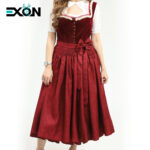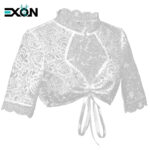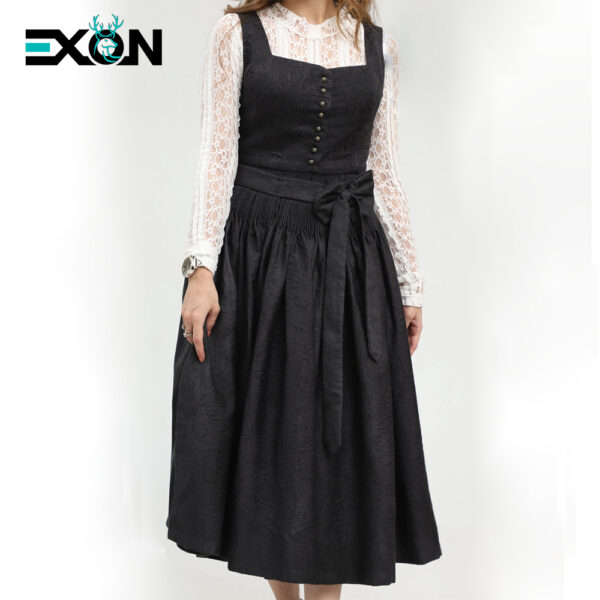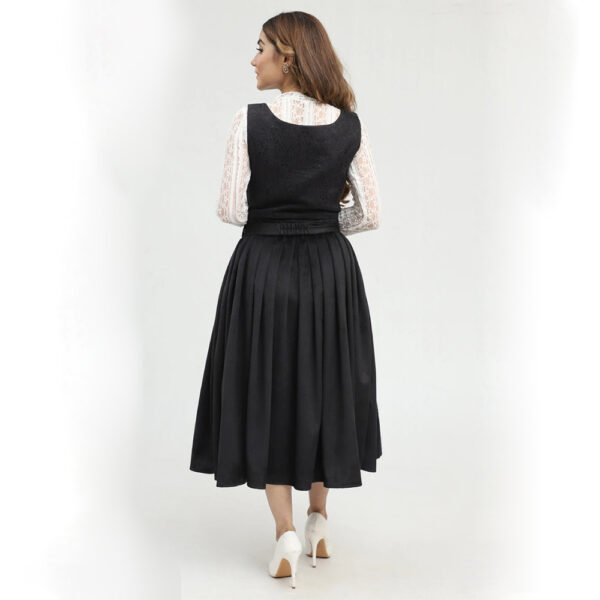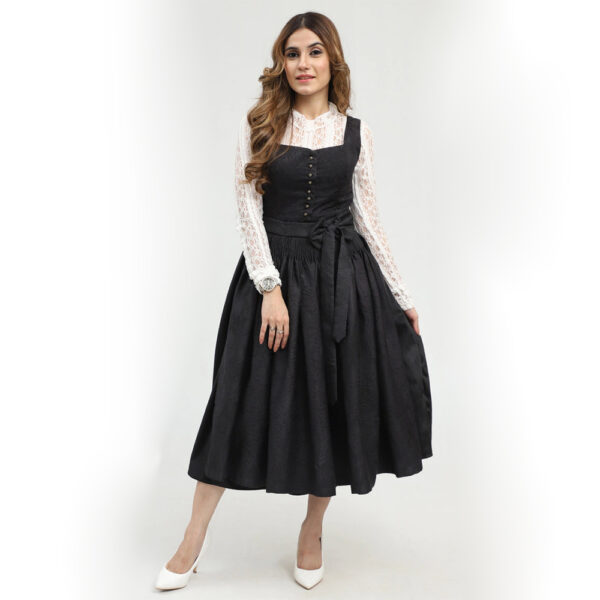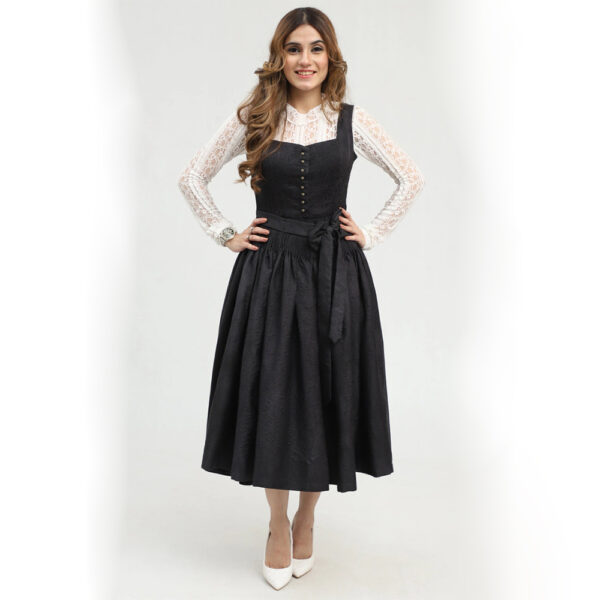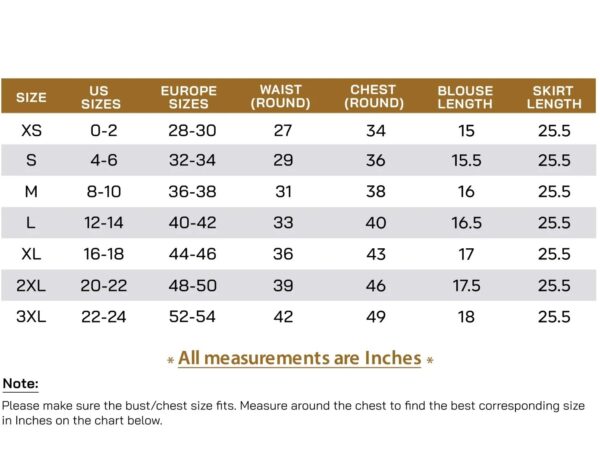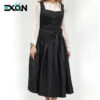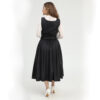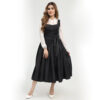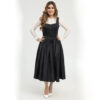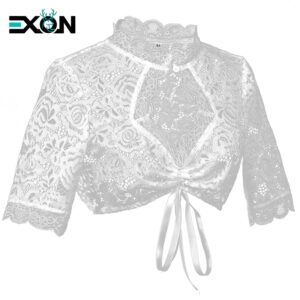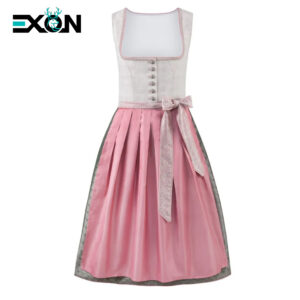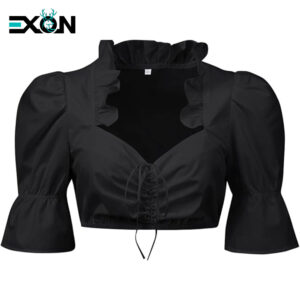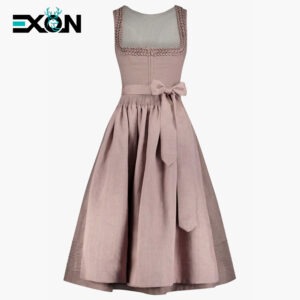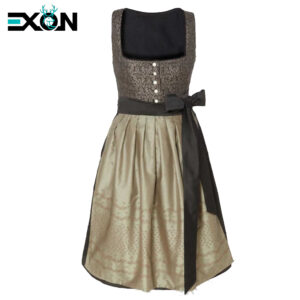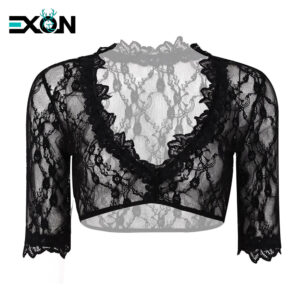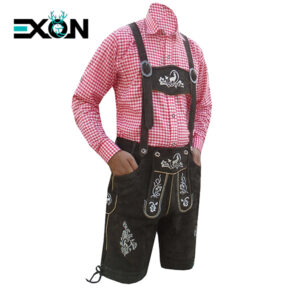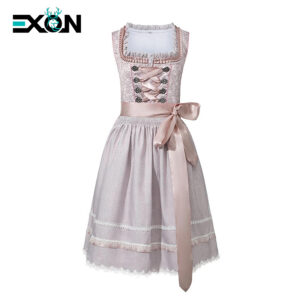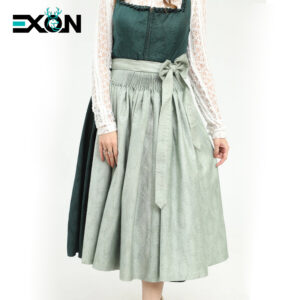Description
The Black Dirndl: Elegance, Mystery, and Modern Sophistication
A black dirndl is a profound departure from the cheerful, floral palette typically associated with this traditional garment. It is a statement of refined elegance, modern sophistication, and Elegant powerful individuality. While deeply respectful of its roots, the black dirndl interprets tradition through a contemporary lens, transforming the dress into an icon of timeless style and intriguing depth.
Symbolism and Cultural Shift
The color black carries a weighty and complex symbolism, which imbues the dirndl with a unique character:
-
Elegance and Formality: Elegant Black is universally synonymous with sophistication, luxury, and formality. A black dirndl elevates the traditional Tract from rustic fest wear to high fashion.
-
It is a common choice for evening events, elegant weddings, or more formal celebrations where understated class is preferred over boisterous brightness.
-
Modernity and Edge: In the world of Trachten fashion, Elegant black is the color of modernity. It represents a break from convention while still honoring the silhouette and craftsmanship of the dirndl. It appeals to a younger, fashion-conscious generation and allows for creative, sometimes edgy, interpretations (e.g., pairing with leather accents or minimalist jewelry).
-
Mystery and Allure: Black has always been associated with mystery, allure, and a touch of dramatic romance. A black dirndl suggests depth and confidence. It is less about shouting for attention and more about commanding it through subtle power.
-
Versatility and Timelessness: Unlike trend-driven colors, black is perpetually chic. A well-made black dirndl is an investment piece that will never go out of style and can be accessorized in countless ways to create different looks for years to come.
Anatomy of a Black Dirndl: A Study in Contrast
The beauty of a black dirndl lies in its dramatic contrast and the emphasis it places on its components:
-
The Bodice (Moeder): The structure of the bodice becomes the absolute focal point.
-
Fabric: Luxurious materials are paramount. Black velvet is a quintessential choice, offering a rich texture that absorbs light and creates a stunning, regal effect.
-
Fine wool, dupioni silk, or high-quality cotton are also common, often detailed with subtle tonal embroidery or intricate lace overlays.
-
Details: On black, every detail is amplified. Silver or jet-black beading, delicate black-on-black embroidery, satin piping, or sleek silver buttons become pronounced and exquisite. The cut must be impeccable, as the dark color highlights the wearer’s silhouette.
-
-
The Skirt (Rock): The full black skirt carries a graceful, dramatic weight. When dancing, it moves with a fluid elegance that is both powerful and feminine.
-
The Blouse (Dirndlbluse): The choice of blouse is critical in defining the dirndl’s final character.
-
Classic White: A crisp white blouse creates a stark, iconic, and timeless contrast. It is the most traditional and popular pairing, ensuring the outfit remains bright and festive.
-
Cream or Ivory: For a softer, more romantic and vintage feel.
-
Black: A black blouse (often lace or sheer) creates a monochromatic, ultra-modern, and intensely sophisticated look. This “head-to-toe” black style is a bold and fashion-forward choice.
-
-
The Apron (Schurz): This is the key to unlocking the dirndl’s personality.
-
White or Cream: A bright white apron offers a classic, sharp contrast, keeping the ensemble fresh and anchored.
-
Lace: A black or white lace apron adds a layer of romantic texture and vintage charm.
-
Patterned: An apron with a delicate silver, grey, or even deep burgundy pattern can add a touch of subtle complexity without overpowering the elegance of the black.
-
The Bow: The placement of the apron’s bow continues to signal the wearer’s relationship status, adding a layer of traditional meaning to the modern aesthetic.
-

